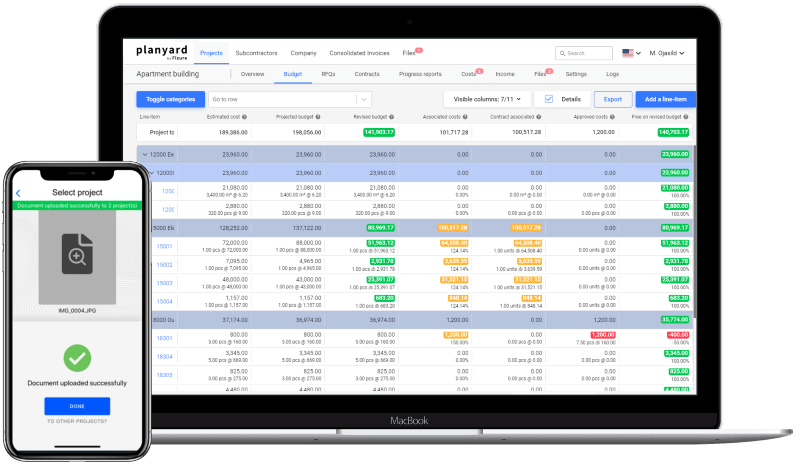Every construction project comes with uncertainty. Whether it’s unexpected site conditions, material price fluctuations, or design changes, unforeseen costs are inevitable. That’s where construction contingency comes in — a financial buffer to keep projects on track despite surprises.
But how much contingency should you set aside? Is it the same for contractors and owners? And how can you manage it effectively to avoid unnecessary spending?
This guide breaks it all down, covering:
✔ What construction contingency is
✔ How to calculate it
✔ The different types of contingency funds
✔ Best practices for managing and tracking contingencies
By the end, you’ll not only understand contingency budgeting but also learn how tools like Planyard can help streamline cost tracking and prevent overages.
What is Construction Contingency?
A construction contingency is a reserve fund set aside in the project budget to cover unexpected costs, risks, or changes that arise during construction. It acts as a safeguard to ensure the project remains financially viable despite unforeseen events.
Key Characteristics
- Not allocated to any specific part of the project
- Used only for genuine unexpected costs
- Helps maintain cash flow and prevent delays
- Typically ranges between 5%–10% of the total project budget
A well-planned contingency fund ensures that minor surprises don’t turn into major financial setbacks.
Types of Construction Contingencies
Not all contingencies are created equal. There are two primary types:
1. Contractor Contingency
✔ Managed by the contractor
✔ Covers unexpected costs due to errors, inefficiencies, or risks not accounted for in the bid
✔ Commonly included in lump sum contracts or Guaranteed Maximum Price (GMP) contracts
Example: If a subcontractor underestimates labor hours, the contractor can use this fund to cover additional costs without going back to the client.
2. Owner Contingency
✔ Managed by the project owner
✔ Covers changes or additions to the scope of work
✔ Used for client-driven modifications, unexpected site conditions, or unforeseen regulatory requirements
Example: If an owner decides to upgrade flooring materials mid-project, they can use the contingency fund to cover the cost difference.
How to Calculate Construction Contingency
The amount of contingency varies depending on project type, complexity, and risk factors. Here’s how it’s typically calculated:
| Project Type | Typical Contingency % |
| Small residential project | 5% – 7% |
| Commercial projects | 7% – 10% |
| Large infrastructure | 10% – 15% |
| High-risk projects | 15% – 20% |
Formula for Contingency Budget
Contingency Budget = Total Project Cost × Contingency Percentage
Example Calculation:
- Total project cost: $1,000,000
- Contingency percentage: 10%
- Contingency fund = $1,000,000 × 10% = $100,000
Is Construction Contingency a Hard Cost?
No. Construction contingency is considered a soft cost, as it is a budgeted reserve rather than a direct cost. However, once spent on specific construction activities, it becomes a hard cost.
Best Practices for Managing Construction Contingency
- Clearly Define Contingency Usage
Ensure the contract specifies what the contingency fund can and cannot be used for. This prevents misuse and protects both parties. - Track Contingency Spending in Real-Time
Without careful tracking, contingency funds can quickly disappear. Use construction budgeting software to monitor contingency usage and keep financials under control. - Avoid Treating Contingency as Extra Budget
Contingency is for unexpected costs, not general overspending. Contractors and owners must resist the temptation to dip into the fund unless necessary. - Reevaluate and Adjust the Contingency Over Time
As the project progresses, update your contingency forecast. If risks decrease, funds can be reallocated. If new risks emerge, you may need to increase reserves. - Use a Tiered Contingency Approach
For large projects, split contingency into phases to prevent overuse early in the project.
Construction Contingency in Action: Real-World Scenarios
Scenario 1: Design Changes
Problem: The owner decides to switch from standard fixtures to high-end lighting halfway through the project.
Solution: Owner contingency covers the cost difference without impacting the contractor’s budget.
Scenario 2: Unexpected Site Conditions
Problem: While excavating, contractors discover unstable soil requiring additional foundation work.
Solution: Contractor contingency covers added costs for soil reinforcement.
Scenario 3: Price Inflation on Materials
Problem: Steel prices surge 15% mid-project due to supply chain disruptions.
Solution: The contingency fund absorbs the extra cost, preventing delays.
How Planyard Helps You Manage Construction Contingency
Tracking and managing contingencies manually can lead to errors and overspending. Planyard simplifies this process with:
✔ Real-time budget tracking – See contingency spending live and avoid going over budget.
✔ Automated approval workflows – Ensure all contingency use is documented and approved.
✔ Forecasting tools – Predict cost overruns before they happen.
✔ Seamless integration with accounting software – No need for manual data entry.
With Planyard, you gain full financial visibility, ensuring contingencies are used wisely.
Plan for the Unexpected, Stay on Budget
Construction projects are unpredictable, but a well-managed contingency fund ensures that surprises don’t derail your budget. By understanding what contingency is, how to calculate it, and best practices for managing it, you can reduce financial risk and maintain control over your project’s costs.

With tools like Planyard, construction teams can track spending, forecast risks, and ensure contingency funds are used effectively—eliminating guesswork and keeping projects profitable.
Ready to take control of your construction budget? Try Planyard for free or book a demo with our team.